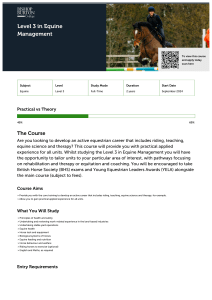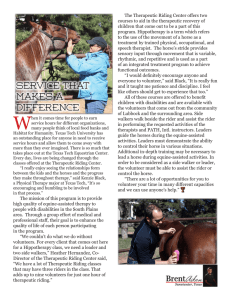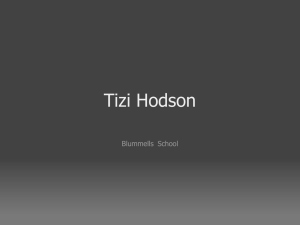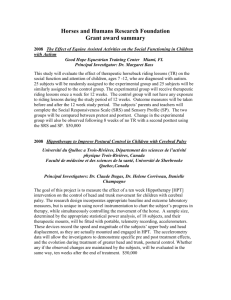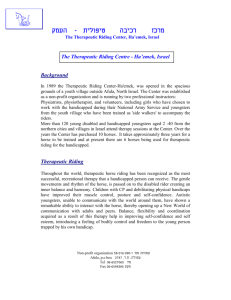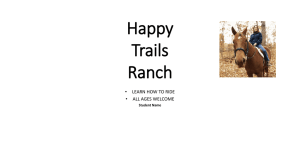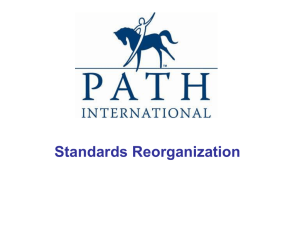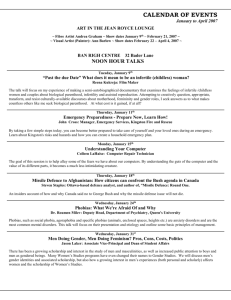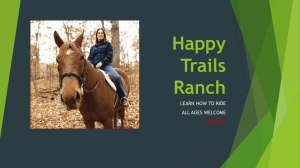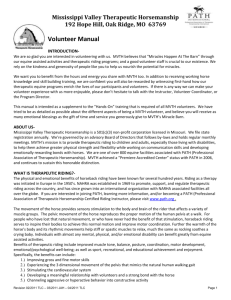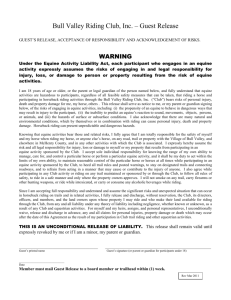Transitions
advertisement
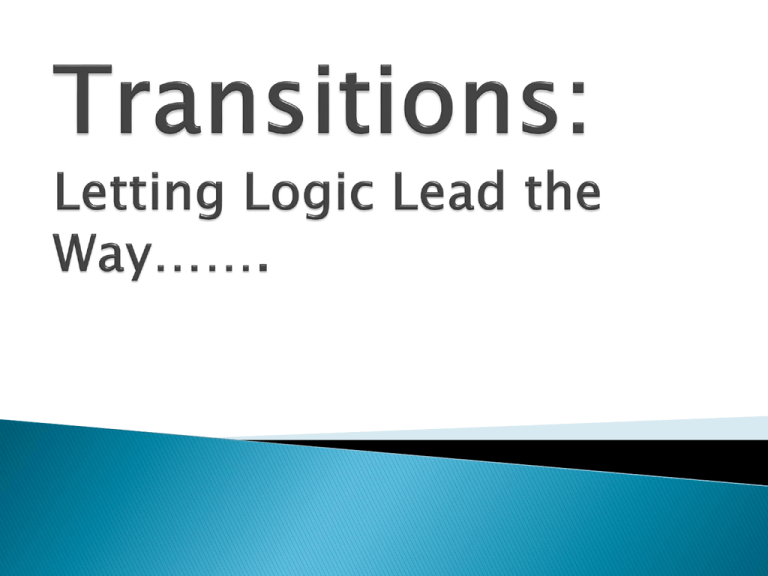
Executive Director of Special Strides Therapeutic Riding Center Physical Therapist Physical Therapy Clinical Instructor Treasurer, American Hippotherapy Association President, HRH of NJ Therapy Therapeutic/Adaptive PT and OT Riding Cooperation Therapeutic Driving Equine Facilitated Learning 130 clients-70 % receive therapy services/30% riding instruction 6 Therapists (PT and OT) 4 Therapeutic/Adaptive Riding Instructors 1 Therapeutic Driving Instructor 2 holding certification in EFL 2 holding certification as Equine Specialists Equine Assisted Activities & Therapy Recreational Program Riding, Driving, Vaulting Therapy Program Equine movement & related activities When we look at the definitions and goals the decision is very clear. Definitions-who is moving whom? Goals of the horse and human relationship Recreational and educational model where the goals are on the horse or ground but always directly related to equine skills and horsemanship. Addresses clinical impairments that lead to a specific evidence based plan of care Movement of the horse facilitates the achievement of very specific goals meaningful to each client to change function. Therapy Riding Riding Therapy What are the goals--- Let the goals of the client, parent or prescribing MD lead the way. Therapy goals◦ Change in the neurophysiologic status of the nervous system ◦ Change in the musculoskeletal system function ◦ Overall change in the functional status for activities of daily living Therapeutic/Adaptive Riding: A program based on equine skill acquisition as well as social/emotional gains of a recreational activity individually or in large/small groups. Recreational Goals◦ Provide a recreational or sport activity for an individual with special needs that requires adaptation in either equipment or instruction. When the therapy goals of the individual have been met and they desire to continue to ride a horse to further their recreational goals When they are ready to direct the movement of the horse and develop horsemanship skills When the functional status of a current recreational rider has changed and they no longer meet the precautions/contraindications of a riding program. ◦ Decline in medical status ◦ Incidence of seizures ◦ Change in skeletal configuration—progression of scoliosis Both types of programming at the same center-integrated model Develop a relationship with other disciplines to support this transition Use your state organization to locate riding instructors or therapists if you cannot find them on your own Provide a safe environment where individuals of all abilities can perform to their greatest potential.
